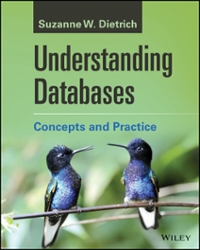Question
Under your home directory, create a directory called project3_[university_id] and inside the directory, write a shell script called mysh. When mysh is executed, it displays
Under your home directory, create a directory called project3_[university_id] and inside the directory, write a shell script called mysh. When mysh is executed, it displays the prompt: myprompt > and accepts one of the following six commands: 1. myfinger name1 name2 name3 ... This command will display the login name, full name, home directory, and the default shell for each of the names given on the command line. If one of the names is not found, it should display an error message corresponding to that name. If myfinger is entered without any arguments, then the login name, full name, home directory, and the default shell should be displayed for all the users logged in to the system at that time. You can use the who command to retrieve all users logged in to the system. You are not allowed to use the finger command in implementing this command. You can rely on the format set by prj2_passwd file from Project 2 to implement this command. Example usage: myprompt > myfinger u1150129 Login Name: u1150129 Full Name: Mohammad Kahala Home Directory: /home/students/comp311/u1150129 Default Shell: /bin/bash myprompt > 2. mywhich command1 command2 command3 ... This command will check each directory listed in users PATH variable for each of the commands given as arguments, then display the full path of each command (file) found in the PATH. If a given command (file) cannot be found in any of the directories listed in PATH, then it should display a message saying: no such command. This command takes at least one argument, so in case of no arguments, you should display a proper error message. You are not allowed to use the which command in implementing this command. Example usage: local-machine$ echo $PATH /usr/bin:/bin:/usr/sbin local-machine$ ./mysh myprompt > mywhich command1 /usr/bin/command1 /usr/sbin/command1 myprompt > 3. mycp srcfile dstfile This command only copies a given source file name (if it exists) to a given destination file name. If no file names are given it should display an error message. You also have to handle the case where the given arguments corresponds to directories or non-existence files. You are not allowed to use the cp command in implementing this command. Think of another way to copy the contents of a file to another file. 2 COMP 311 : Project # 3 Example usage: local-machine$ ls work ffff aaaa bbbb local-machine$ ./mysh myprompt > mycp file1 file2 Error: file1 does not exit. myprompt > mycp aaaa cccc Success: File [aaaa] copied to file [cccc]. myprompt > 4. mydel filename(s) directoryname(s) This command deletes any file(s) or directorie(s) given as arguments (if they exist). The command takes at least one argument. In case of no arguments, proper error message should be displayed. Example usage: local-machine$ ls work ffff aaaa bbbb local-machine$ ./mysh myprompt > mydel work ffff wrong [work] directory is deleted. [ffff] file is deleted. [wrong] file does not exit. myprompt > 5. myhelp command1 command2 command3 ... This command displays one line of help/usage for any of the six commands (myfinger, mywhich, mycp, mydel, myhelp, and myexit) which can be passed as arguments. You are free to choose proper wording for each help line. The command may take more than one argument. If no arguments are entered, the command should display help for all six commands: myfinger, mywhich, mycp, mydel, myhelp, and myexit Example usage: myprompt > myhelp mydel myexit [mydel] This command deletes any existence file(s)/directory(s) given as arguments. [myexit] This command lets the users exit 'mysh' script and return to original shell. myprompt > 6. myexit This command lets the users exit the shell script mysh and return to their original shell. This command takes no arguments. Example usage: myprompt > myexit local-machine$ 3 COMP 311 : Project #3 7. If any commands other than the six commands above are entered, mysh should display the message: Command not found. An example usage: myprompt > hello Command not found myprompt > Be sure to use the designated names for your shell script files as well as the commands. Make sure to follow proper modular design and use proper indentation to make your script readable. Also, be sure to include any necessary error checking. The script will keep prompting the user to enter any of the six commands until the command myexit is entered
Step by Step Solution
There are 3 Steps involved in it
Step: 1

Get Instant Access to Expert-Tailored Solutions
See step-by-step solutions with expert insights and AI powered tools for academic success
Step: 2

Step: 3

Ace Your Homework with AI
Get the answers you need in no time with our AI-driven, step-by-step assistance
Get Started


